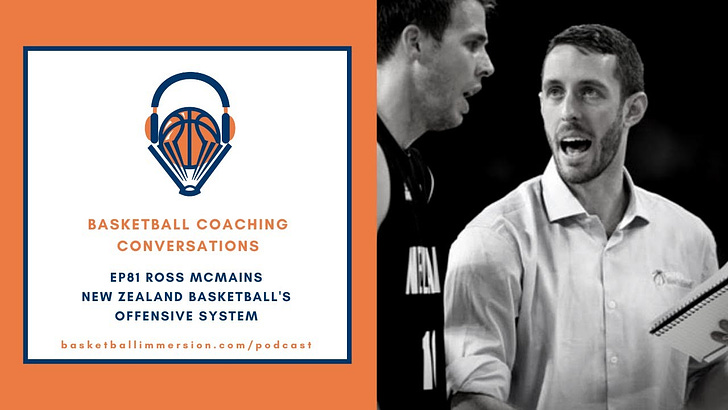Episode XVI: Offensive Systems, Replicating Game Intensity, Culture Before Results and more. . .
"The goal of leadership seems simple: to get people to do what they need to do to support the mission and the team."
I’ve been sharing this newsletter for a while now, and have decided to pivot it into a performance/coaching based newsletter. The format will stay the same, however, I will only be sharing my weekly learnings on coaching, leadership & performance from this week on.
This week, we’ll dive into:
Current Podcast: Offensive Systems with Ross McMains
Practice Idea: Duplicate Game Intensity in Practice
X’s & O’s: Tennessee Transition
Leadership Thought: Culture Precedes Results
Recommended Reading: Representative Environments are Important
Reflective Question: Cleaning up your Feed
Current Podcast: Offensive Systems with Ross McMains
I dived back into this old podcast with Chris Oliver and Ross McMains. There are so many takeaways on creating an offensive system, especially Coach McMains thoughts on dominoes.
“ball doesn’t stop moving. We have to work on first touch decisions”
“three tenets of transition offense - (1) sprint (2) find the nearest sideline and (3) maintain spacing
“running teams are great because of the numerical advantages that they create”
“we tracked how often the ball handler could get the ball under the free throw line extended in 17 seconds”
“we did a lot of decision-making drills - sometimes with good spacing and other times with poor spacing and let them play out of that!”
Listen to the full podcast below for some ideas to enhance your offense.
Practice Idea: Duplicate Game Intensity in Practice

Last week, I shared an approach that we’ve been using in planning our practice sessions. Here’s more details on how we do it and what we include in each segment. Click on the image for the post.
X’s & O’s: Tennessee Transition
In attempting to play fast, we spend a lot of time working on our transition game. This allows us to refine our offensive and defensive systems at the same time.
One of our favourite transition activities is the Tennessee Transition. Expanding on Coach McMains idea, we’ve moved a wing player up on the sideline and it has really helped drive home the message of first eight seconds.
Click on the image below for the article
Leadership Thought: Culture Precedes Results
Every athlete says that they want to win. They want to succeed.
Most of them probably don’t even understand what that means. We differentiate the act of winning and the identity of a winner. This is the same as being a champion or winning a championship - the act and the identity are different.
Winners act like winners. They show up on time, they work hard, they pick their teammates up, they take care of their equipment, they work on their craft, they execute the extra rep. Regardless of the result, winners act like winners. Their behaviours are in line with their identity.
Those who say they want to win like what winning brings. Fame and popularity. Winners don’t care about the fame. They just want to win. Act like a winner.
Recommended Reading: Representative Environments are Important
https://bulletproofmusician.com/why-highly-representative-practice-is-so-important-except-when-it-isnt/
I’ve been going down a rabbit hole of learning and the idea of representative task environments.
Do sports such as basketball (invasion sports) compare to sports such as baseball (striking) or tennis (raquet games) or the 100m sprint (athletics)? Do the same teaching pedagogies apply across these sports?
In invasion sports, athletes are trying to complete an objective as the opposition is actively trying to prevent them. There is more noise obscuring the signal. Athletes need to sift through that to locate the signal and then act on it.
In raquet and striking games, the opposition is attempting to prevent the athlete from completing their objective, but in a passive way. They are not invading the space. This means that the signal is more clearer as the line of vision is more open.
In athletics, the athletes aren’t being prevented from achieving their objective. Each athlete is focused on their signal. The noise in this case isn’t being obscured by the opposition.
How does the idea of linear vs non-linear pedagogy fit into this? How does the constraints led approach or blocked practice segments fit into this?
I don’t have answers, yet the above article was an interesting look to see how task representative training doesn’t always yield better results
Reflective Question: Cleaning up your Feed
Who are the people that I need to remove from my social feeds this coming year?
That’s all for this week. If you found this interesting, I would appreciate you sharing it on your social media accounts.
Until next week.
Nabil Murad






